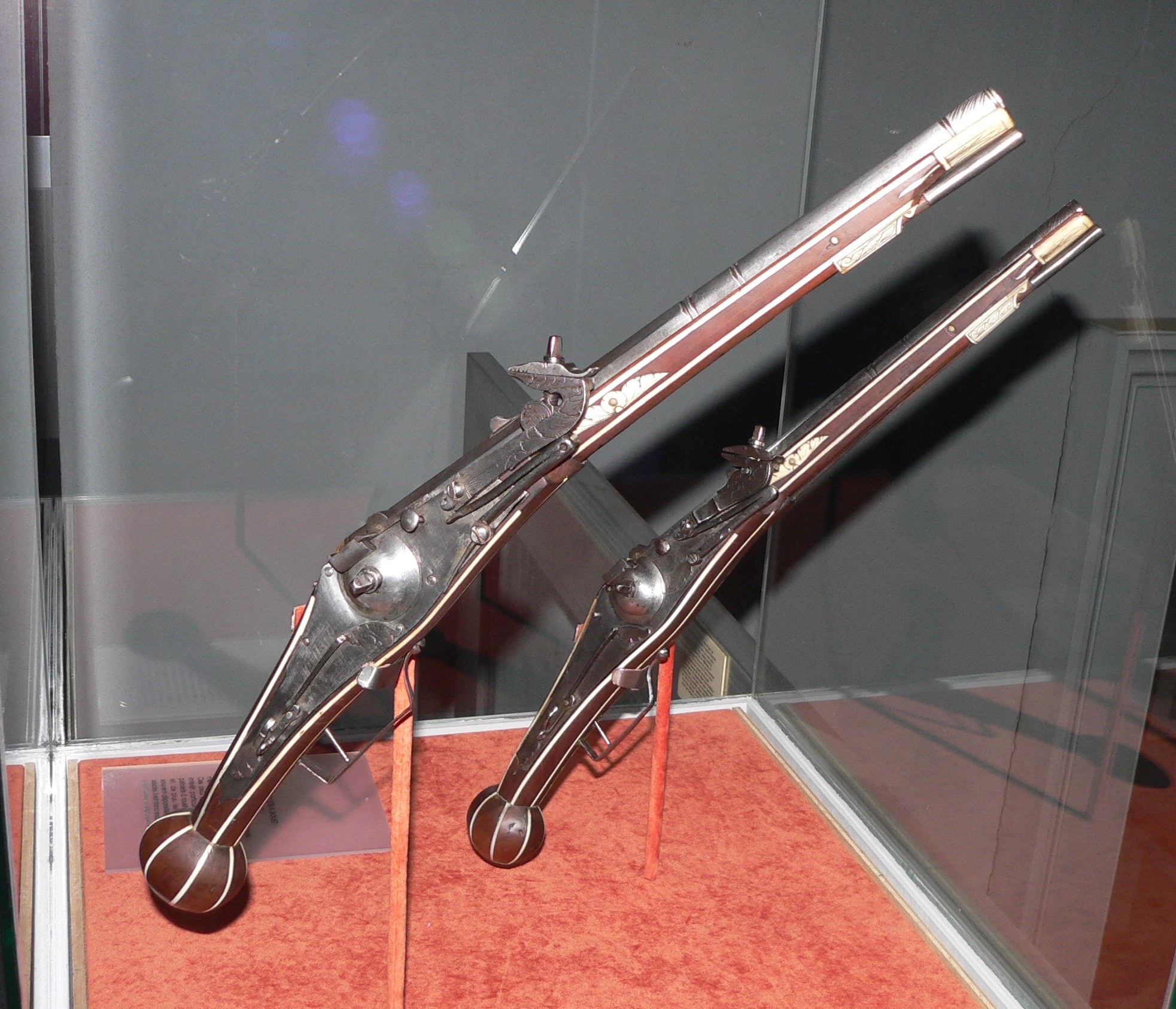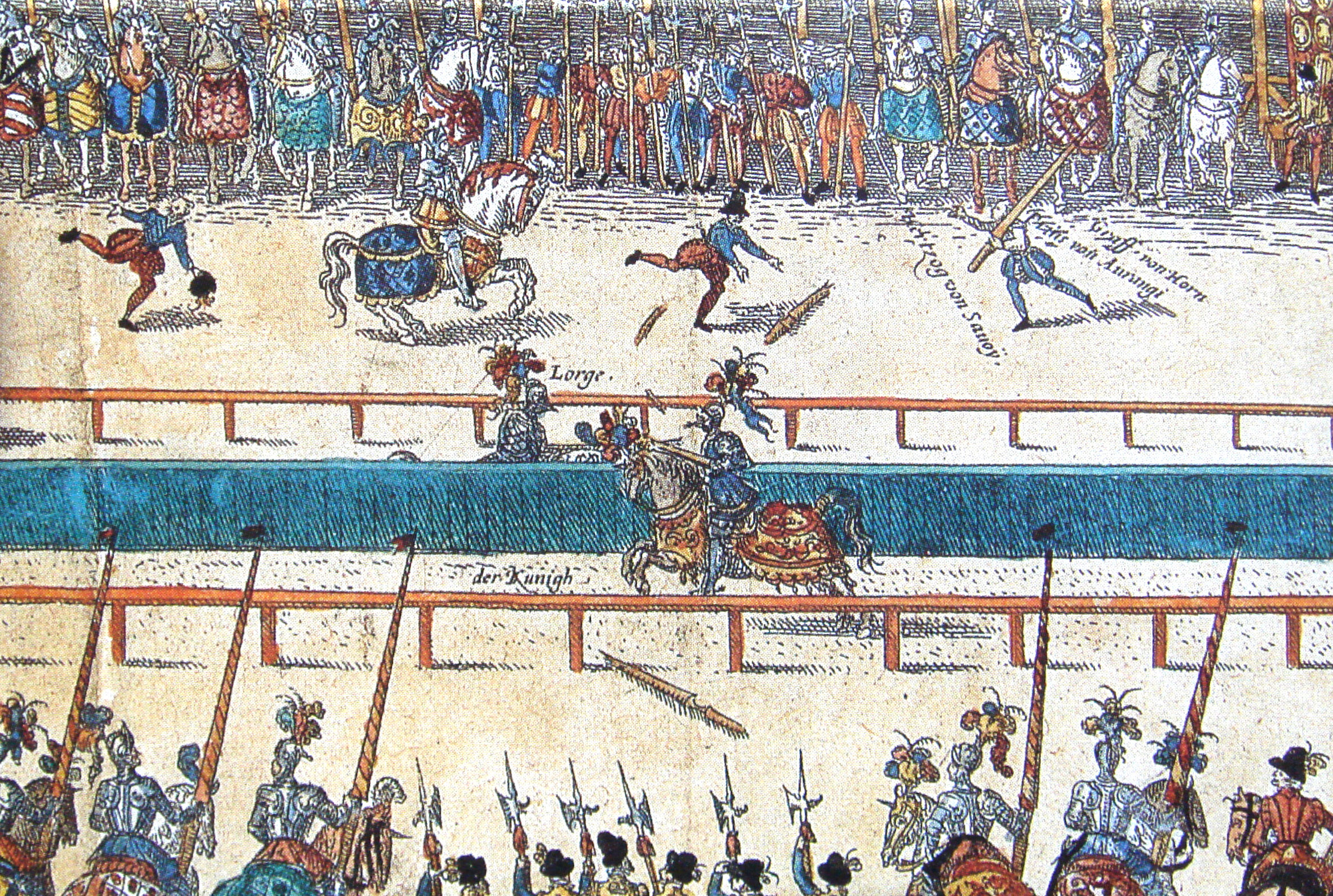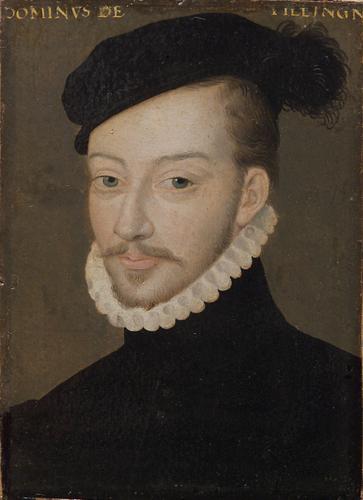|
Surprise Of Meaux
The surprise of Meaux (''La surprise de Meaux'') was a failed coup attempt by leading aristocratic Huguenots which precipitated the second French War of Religion. Dissatisfied with their lot, and under the pretext of fear of extermination, Louis, Prince of Condé and Gaspard II de Coligny plotted to seize the king, Charles IX, while he was staying near Meaux. Alerted by the mustering of the Huguenots, the royal court made a dash for Paris, fighting off attempts to break through to them en route. Their plan foiled, the Huguenots laid siege to the city, beginning the second war. The event would be of lasting importance in the reputation it gave its architects for sedition. Between the wars Bayonne and Alba The first French Wars of Religion was brought to a close with the Edict of Amboise in 1563, which was later consolidated into a pacification edict. Despite this peace offering concessions to the Huguenots, the leading nobles of their faction remained suspicions as to the c ... [...More Info...] [...Related Items...] OR: [Wikipedia] [Google] [Baidu] |
French Wars Of Religion
The French Wars of Religion is the term which is used in reference to a period of civil war between French Catholics and Protestants, commonly called Huguenots, which lasted from 1562 to 1598. According to estimates, between two and four million people died from violence, famine or diseases which were directly caused by the conflict; additionally, the conflict severely damaged the power of the French monarchy. The fighting ended in 1598 when Henry of Navarre, who had converted to Catholicism in 1593, was proclaimed Henry IV of France and issued the Edict of Nantes, which granted substantial rights and freedoms to the Huguenots. However, the Catholics continued to have a hostile opinion of Protestants in general and they also continued to have a hostile opinion of him as a person, and his assassination in 1610 triggered a fresh round of Huguenot rebellions in the 1620s. Tensions between the two religions had been building since the 1530s, exacerbating existing regional divisi ... [...More Info...] [...Related Items...] OR: [Wikipedia] [Google] [Baidu] |
Spanish Road
The Spanish Road ( Spanish: ''Camino Español'', German: ''Spanische Straße'') was a military road and trade route in the late sixteenth and early seventeenth centuries, linking the Duchy of Milan, the Franche-Comté and the Spanish Netherlands, all of which were at the time territories of the Spanish Empire under the Habsburgs. It was also known as the Road of the Spaniards (''Camino de los Españoles''), Road of the Spanish Tercios (''Camino de los Tercios Españoles''), or Sardinian Corridor (''Corredor Sardo'') in Spanish. The Spanish Road was created under Philip II as a vital artery for the Spanish war effort during the Eighty Years' War against the Dutch Republic. For Spain, it would have been much quicker to ship troops and supplies directly from Spain to the Low Countries – a sailing ship of the time could usually cover about a day, whereas the average pace of soldiers marching on the Spanish Road was only a day. However, Spanish vessels sailing up the English Chann ... [...More Info...] [...Related Items...] OR: [Wikipedia] [Google] [Baidu] |
Reiter
''Reiter'' or ''Schwarze Reiter'' ("black riders", anglicized ''swart reiters'') were a type of cavalry in 16th to 17th century Central Europe including Holy Roman Empire, Polish–Lithuanian Commonwealth, Tsardom of Russia, and others. Contemporary to the cuirassier and lancer cavalry, they used smaller horses, for which reason they were also known as ''Ringerpferde'' (corresponding to the French '' Argoulets''). They were originally recruited in the North German Plain west of the Oder at the time of the Schmalkaldic War of 1546/7. The Reiter raised firearms to the status of primary weapons for cavalry, as opposed to earlier Western European heavy cavalry which primarily relied upon melee weapons. A Reiter's main weapons were two or more pistols and a sword; most Reiters wore helmets and cuirasses and often additional armor for the arms and legs; sometimes they also carried a long cavalry firearm known as an arquebus or a carbine (although this type of horsemen soon b ... [...More Info...] [...Related Items...] OR: [Wikipedia] [Google] [Baidu] |
Senechaussee
A bailiwick () is usually the area of jurisdiction of a bailiff, and once also applied to territories in which a privately appointed bailiff exercised the sheriff's functions under a royal or imperial writ. The bailiwick is probably modelled on the administrative organization which was attempted for a very small time in Sicily and has its roots in the official state of the Hohenstaufen. In English, the original French ''bailie'' combined with '-wic', the Anglo-Saxon suffix (meaning a village) to produce a term meaning literally 'bailiff's village'—the original geographic scope of a bailiwick. In the 19th century, it was absorbed into American English as a metaphor for a sphere of knowledge or activity. The term survives in administrative usage in the British Crown Dependencies of the Channel Islands, which are grouped for administrative purposes into two bailiwicks — the Bailiwick of Jersey (comprising the island of Jersey and uninhabited islets such as the Minquiers and ... [...More Info...] [...Related Items...] OR: [Wikipedia] [Google] [Baidu] |
François De Coligny D'Andelot
François d'Andelot de Coligny (18 April 1521, Châtillon-sur-Loing - 27 May 1569, Saintes, Charente-Maritime) was one of the leaders of French Protestantism during the French Wars of Religion. The son of Gaspard I de Coligny, he was the younger brother of Odet, cardinal de Châtillon and Gaspard de Coligny the admiral. Life Italian Wars He first gained military experience in the Italian Wars, and so distinguished himself at the battle of Ceresole (1544) that Louis de Bourbon, still comte d'Enghien at that time, knighted him on the battlefield. In 1547 he was made inspector-general of the infantry, and commanded the French troops sent to Scotland to defend the rights of Mary, Queen of Scots (until 1559, queen-consort of France). When war broke out again in Italy, he returned, marching to Parma and getting trapped in the city when it soon afterwards came under siege. Taken prisoner during a sortie, he was taken to the castle of Milan, where he remained until the treaty of ... [...More Info...] [...Related Items...] OR: [Wikipedia] [Google] [Baidu] |
Gabriel De Lorges, Count Of Montgomery
Gabriel de Lorges, Count of Montgomery, Lord of Lorges and Ducey (5 May 153026 June 1574), was a French nobleman of Scottish extraction and captain of the Scots Guard of King Henry II of France. He is remembered for mortally injuring Henry II in a jousting accident and subsequently converting to Protestantism, the faith that the Scots Guard sought to suppress. He became a leader of the Huguenots. In French-language contexts, his name is spelled Montgommery. Career On 30 June 1559, during a jousting match to celebrate the Peace of Cateau Cambrésis between Henry II and his longtime Habsburg enemies, and two major marriages, namely that of Marguerite, the king's sister, with the Duke of Savoy Emmanuel-Philibert, and that of Elisabeth, the king's eldest daughter, with Philip II, king of Spain, a splinter of wood from Montgomery's shattered lance pierced Henry's eye and entered his brain, fatally injuring him. From his deathbed Henry absolved Montgomery of any blame, before dying o ... [...More Info...] [...Related Items...] OR: [Wikipedia] [Google] [Baidu] |
Charles De Téligny
Charles de Téligny (c. 153524 August 1572) was a French soldier and diplomat. Biography De Téligny belonged to a respected Huguenot family of Rouerque, and received an excellent training in letters and arms at the house of Gaspard de Coligny. He was employed on several peace missions; he represented the Protestants before the king, and was entrusted by Condé with the presentation of his terms to the queen-mother Catherine in 1567, and in the following year he assisted at the conference at Châlons and signed the Peace of Longjumeau, which was destined to be of short duration. On the outbreak of war, he took part in the siege of Poitiers, directed an unsuccessful attack on Nantes, fought bravely under Coligny at Moncontour, and participated in the negotiations ending in the Peace of Saint-Germain-en-Laye (8 August 1570). In 1571 he retired to La Rochelle and married Louise de Coligny, but was speedily recalled to Paris to serve on the bi-partisan commission of adjustment. ... [...More Info...] [...Related Items...] OR: [Wikipedia] [Google] [Baidu] |
François III De La Rochefoucauld
François III, Count of La Rochefoucauld, prince of Marcillac, count of Roucy and baron of Verteuil (1521 - 24 August 1572) was a French courtier and soldier, serving as gentleman-in-ordinary to the king's chamber. He was a friend of Charles de Téligny and Louise de Coligny, serving as one of the witnesses to their marriage, whilst his humour and intelligence rendered him a favourite of Henry II of France and Charles IX of France. He is also notable as one of the Protestant leaders killed in the St. Bartholomew's Day massacre. Life He was born in Paris as son of count François II de La Rochefoucauld. He became a brilliant soldier, fighting with distinction under Henry II of France during the first three French civil wars. According to Brantôme in his youth he found favour in Henry II's court, becoming a knight in the Order of the King, fighting in the king's entourage and having quite a busy military career. In 1552 he took part in the siege of Metz as captain of light cava ... [...More Info...] [...Related Items...] OR: [Wikipedia] [Google] [Baidu] |
Philip De Montmorency, Count Of Horn
Philip de Montmorency (ca. 1524 – 5 June 1568 in Brussels), also known as Count of Horn, ''Horne'', ''Hoorne'' or ''Hoorn'', was a victim of the Inquisition in the Spanish Netherlands. Biography De Montmorency was born as the eldest of four children of Josef van Montmorency, Count of Nevele and Anna van Egmont the Elder, who had married shortly after August 26, 1523, and lived at Ooidonk Castle.Albertus van Hulzen, ''De Grote Geus: en het falende Driemanschap'', (Typographie Rombus, 1995), 7 note1. His father died early in 1530 in Bologna, Italy, where he was attending the coronation of Charles V as Holy Roman Emperor. His mother remarried Johan II, Count of Horn, one of the wealthiest nobles of the Netherlands, who, in 1540, left the County of Horne to his wife's children on condition they assume his name. A page and later chamberlain at the court of Charles V, de Montmorency married Walburgis van Nieuwenaer in 1546. He became stadtholder of Guelders in 1555, an Admiral of ... [...More Info...] [...Related Items...] OR: [Wikipedia] [Google] [Baidu] |
Lamoral, Count Of Egmont
Lamoral, Count of Egmont, Prince of Gavere (18 November 1522 – 5 June 1568) was a general and statesman in the Spanish Netherlands just before the start of the Eighty Years' War, whose execution helped spark the national uprising that eventually led to the independence of the Netherlands. Biography The Count of Egmont was at the head of one of the wealthiest and most powerful families in the Low Countries. Paternally, a branch of the Egmonts ruled the sovereign duchy of Guelders until 1538. Lamoral was born in La Hamaide near Ellezelles. His father was John IV of Egmont, knight in the Order of the Golden Fleece. His mother belonged to a cadet branch of the House of Luxembourg, and through her he inherited the title ''prince de Gavere''.The complicated series of inheritances through which Gavre/Gavere in Flanders and its dependencies passed through the heiress Beatrix de Gavre to Guy IX de Laval and was sold in 1515 to Jacques de Luxembourg, is sketched in Arthur Bertrand d ... [...More Info...] [...Related Items...] OR: [Wikipedia] [Google] [Baidu] |
Michel De L'Hôpital
Michel de l'Hôpital (or l'Hospital) (1507 – 13 March 1573) was a French statesman. Biography De l'Hôpital was born near Aigueperse in Auvergne (now Puy-de-Dôme). His father, who was physician to the Constable de Bourbon, sent him to study at Toulouse. At the age of eighteen he was driven to leave Toulouse for Padua by the poor fortunes of the family patron. He studied law and letters for about six years in Padua, after which he joined his father at Bologna. He also studied law in Bologna. When Charles of Bourbon died, he went to Rome in the suite of Charles V. For some time he held a position in the papal court at Rome, but about 1534 he returned to France, and became an advocate. His marriage, in 1537, procured for him the post of counsellor to the parlement of Paris. He held this office until 1547, when he was sent by Henry II on a mission to Bologna, where the Council of Trent was sitting; after sixteen months of wearisome inactivity there, he chose to be recal ... [...More Info...] [...Related Items...] OR: [Wikipedia] [Google] [Baidu] |




